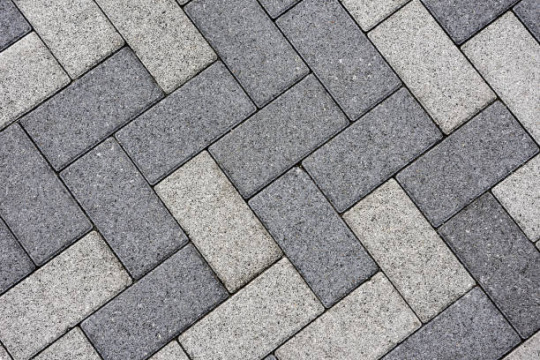Don't wanna be here? Send us removal request.
Text
Competitive Analysis

Paver blocks are a popular choice in the construction market because of their durability, versatility, and ability to create visually appealing surfaces. They are used in driveways, walkways, patios, and more. Recently, eco-friendly innovations like the BioBlock, made from coconut fiber and rice husk ash (RHA), have entered the market as sustainable alternatives to traditional pavers.
The direct competitors of BioBlock are traditional paver block manufacturers. These companies produce concrete and clay pavers, which are widely used due to their proven strength and long-standing market presence. Indirect competitors include natural stone and wooden flooring installers. These alternatives offer unique aesthetics and are preferred by customers seeking a more natural or rustic appearance for their spaces.
BioBlock has the potential to prevail in the market because of its competitive pricing, eco-friendly performance, and impressive strength. Its sustainable design appeals to environmentally conscious consumers while maintaining the durability required for heavy use. By addressing both affordability and performance, BioBlock can carve a unique space in the construction industry.
0 notes
Text
PIT: SELL YOURSELF
Simple skills, big results. I’m Mylene, and I’m here to inspire and make a difference. Thank you!
1 note
·
View note
Text
Guide Questions I asked During the Interview:
How do you see BioBlock positioning itself in the market compared to conventional paver blocks? I think it will become popular, especially for people who care about sustainability and affordability.
Beyond direct sales, what other potential revenue streams can BioBlock explore? I think they can explore waste management partnerships, franchise models and probably consulting and trainig.
Should BioBlock adopt a premium pricing strategy to emphasize its eco-friendly benefits, or focus on affordability to penetrate the mass market? It is best to focus on the afforability for wider reach and market penetration.
How can BioBlock’s unique materials be leveraged to justify higher margins compared to conventional options? By emphasizing its superior sustainability and waste-reduction benefits, which aligns with SDG's goals.
Insights:
I believe BioBlock has great potential to earn more by using its unique materials in creative ways. It can offer services like helping with sustainable landscape design, getting green building certifications, and improving waste management for businesses and towns. BioBlock could also create custom designs for special projects or combine its pavers with other eco-friendly technologies to make them even more useful. Expanding into new products using the same materials could open up more markets. I also think running workshops to train builders on using sustainable materials and teaching communities about the benefits of BioBlock would not only bring in extra income but also build its reputation as a leader in green building. These ideas don’t just help the business—they also support a healthier planet.

1 note
·
View note
Text


Let's talk about a fascinating development in construction as of today- environmentally friendly paver blocks manufactured from rice husk ash and coconut fiber. Can you imagine that? Integrating theses waste into construction materials? Yes, you heard correctly! These bioblocks, which transform garbage into something incredibly valuable, are built from sustainable agricultural waste rather than the typical concrete. This does not only reduces pollutants but at the same time provides builders with an environmentally friendly, long-lasting, and affordable solution. Everyone benefits, but especially those of us who are concerned about sustainability!
Therefore, having a good plan is crucial for a business producing these modified paver blocks. The Business Model Canvas (BMC) can help with that. It functions similarly to a roadmap. Our team outlined the essential components of the company, including who we must collaborate with (such as farmers, government organizations, and builders), what our primary tasks are (such as marketing and quality assurance), and who our ideal clients are (like local governments and green builders). The BMC helps the business stay focused and make wise decisions by outlining everything, from procuring supplies to focusing on eco-conscious customers. It essentially forms the core of their approach.
We can't deny the fact that there is something unique about this startup. We are not only on pace to turn a profit when we use a BMC to keep organized, but they are also actively promoting more environmentally friendly techniques in the construction sector, considering many health issues related to this segment. The potential impact of this bioblock is intriguing, demonstrating that being environmentally responsible need not be costly or fragile. Let's work to create a more environmentally friendly planet one block of coconut fiber and RHA at a time!
0 notes
Text

Questions I asked:

What benefits do you expect from using modified paver blocks made with coconut fiber and rice husk in your construction projects? A sustainable product that is durable with less maintenance
How important is sustainability when selecting materials like paver blocks for your home or business? It's very important especially for the sake of the community.
What challenges do you face in finding eco-friendly paver block suppliers that meet your project requirements? It's not available in the market near my area.
Do you prioritize durability, aesthetics, or eco-friendliness when choosing paver blocks for driveways, pathways, or landscaping? Always, I want my home to be as pleasing as it can be.
How do price, installation and maintenance services for these modified paver blocks affect your decision to purchase them? I'd love to purchase cheaper products with high quality.

Insight:
In the construction industry, concrete is in demand due to the rapid urbanization and development of every country. Hence, the price of cement products has skyrocketed due to the demand and supply relationship. However, behind this booming demand lies a bigger problem that often gets overlooked: the negative health and environmental impacts of cement production. Research has shown that cement dust can cause lung cancer, asthma, and chronic bronchitis, aside from that it can also damage the environment. This may cause a ripple effect in the future, which we would like to avoid.
Therefore with problems like this, our team has decided to pitch an item that will help the industry to have a sustainable product that will somehow reduce the use of cement. Paver blocks for example are used to build patios, driveways, parks, and anything we can think of, making this cement product popular in the market. What if we could tweak their design to make them more eco-friendly and less reliant on cement? Incorporating waste materials such as coconut fiber and rice husk into paver blocks might help solve issues regarding waste materials and reduce the use of cement as a binder.
That said, we didn’t stop at brainstorming—we went out and asked consumers and business owners what they thought of the issue. Unsurprisingly, many expressed concerns about cement being hazardous. "While I was mixing concrete, I inhaled a few cement dust, which makes me cough a lot of times, " Richard, one of the workers constructing a residential building, said. He claimed that his exposure to cement somehow affected his health.
Let's be realistic, we can't fully eliminate cement in the construction industry since we need it to build infrastructures. As of the moment, we don't have any technology to replace it. The best alternative thing we can do is to reduce its usage. By doing so- Modified Paver Block can do that job very well. It functions as a regular paver block that we see every day, it's just that we adjusted the design mix while keeping in mind the integration and repurposing of coconut fiber and rice husk.
I believe that this solution might help consumers and construction companies to align their mission and vision to SDGs. I believe this will help the community and the environment for sure. The changes we make today, no matter how small, can help create a better tomorrow.
0 notes
Text

Guide Questions I asked during the interview:
• What’s been the most challenging part of your week?
• What do you think has been the hardest part about dealing with that challenge?
• What are the main distractions you face when studying?
• How long do you usually stay focused before you start getting distracted?
• Can you describe what happens when you try to focus while studying?
• Have you noticed any specific patterns or triggers that cause you to lose focus?
• What strategies have you tried to help improve your focus?
Insight:
In today's modern and fast-paced digital world, many individuals are struggling to maintain focus during study sessions. The demands of modern education and constant distractions like smartphones and social media make focus and concentration a daily challenge for many. During a recent interview, I spoke with Elrose, a graduate preparing for her licensure examination, who shared her struggles with focus. Her story reflects on countless students including me.
“At maximum, I can only focus one hour every time I study,” she explained “After that, I tend to lose my concentration because I can’t help but use my phone and browse on the internet,” Elrose said which describes her concern every week that even in review centers, where the environment is designed for studying, distractions are difficult to avoid. Like many of us, Elrose finds it a hard time to focus on one thing for a long period. Her experience is not uncommon. Students today face a challenge due to being accustomed to technology and being easily distracted making it an everyday challenge to stay focused for extended time.
One simple innovation will constrain her from using her smartphone and develop an app to limit her daily usage. An app that can still be used for emergencies but will automatically lock itself if it detects that the user is using too much screen time.
Another practical solution is the use of functional beverages which is a combination of natural ingredients known to enhance an individual’s cognitive function such as focus with the convenience of a drink. This functional beverage will provide a healthier alternative to energy drinks or excessive caffeine, supporting sustained mental performance without the negative side effects. With the increasing demands on students, such innovations could be instrumental in helping them achieve their academic goals while managing the distractions of modern life.
While the previous two solutions are practical and attainable, imagine a future where technology goes a step further. One particularly exciting yet still developing an idea is the use of brain interface to help monitor and improve focus in life, enhancing productivity with the help of a chip implanted in the brain.
However, while these futuristic innovations hold great promise, the most practical and immediate solution lies in the use of functional beverages. By providing a natural and healthier alternative to energy drinks, functional beverages can offer students like Elrose and me the focus and mental clarity needed without the drawbacks of excessive caffeine or artificial stimulants. With the fast-paced demands of education today, this solution offers an accessible and effective way to support cognitive function and sustained concentration.
1 note
·
View note